Shortcuts in Microsoft Fabric serve as a method to refer to data from various sources without duplicating it. They provide the ability to access data spanning different domains, clouds, and accounts, essentially establishing a unified virtual data lake for your organisation.
Shortcuts in Microsoft Fabric work like special pointers. They don’t mess with the actual data even if you delete or shift them around. These shortcuts can point to data inside or outside, like in OneLake, Azure, AWS, or Dataverse.
Creating shortcuts in the Fabric Lakehouse is similar to making shortcuts for Excel or Word files on our desktop window.
Shortcuts in OneLake
- They’re like pointers to other storage spots.
- Can point to places inside or outside OneLake.
- The spot they point to is called the “Target path.”
- The spot where the shortcut has been created is the “shortcut path.”
Appearance and Usage of Shortcuts
- Display as folders in OneLake.
- Accessible by any service with OneLake access.
Characteristics of Shortcuts in OneLake
- Behave like symbolic links.
- Independent of the target – deleting a shortcut doesn’t affect the target.
- If you move, rename, or delete the target path, the shortcut may break.
Where to Create Shortcuts
- Lakehouses
- Kusto Query Language (KQL) databases
Where Shortcuts Can Point To
- Other places in OneLake
- Azure Data Lake Storage (ADLS) Gen2
- Amazon S3 storage accounts
- Dataverse
Creating shortcuts in Lakehouse
Before you start creating shortcuts in the lakehouse, it’s essential to understand how the folder structure is organized.
A lakehouse has two main folders:
- Tables
- Folders
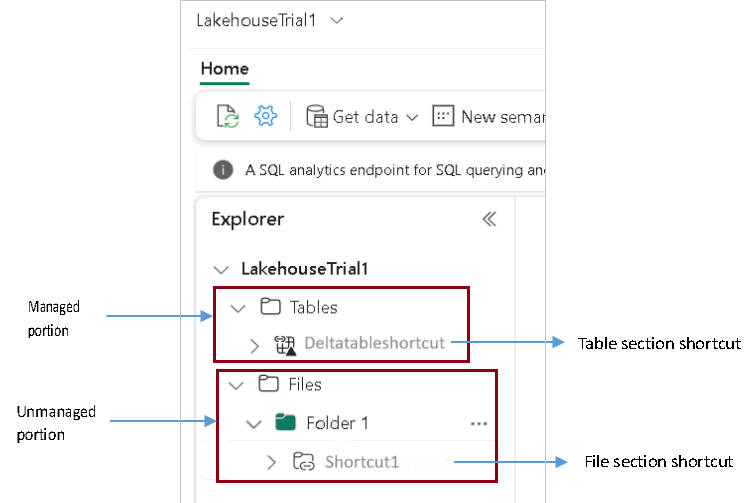
In the Table folder
- Managed area for hosting tables in various formats (CSV, Parquet, or Delta).
- All tables, whether created automatically or explicitly, are acknowledged as part of the lakehouse.
- shortcuts can only be created at the main level, not in any subdirectories.
- If your shortcut points to data in a specific format, the lakehouse smartly organizes it as a table.
In the Files folder
- Unmanaged space for storing data in any file format.
- Delta files in this area are not automatically treated as tables.
- Shortcuts in the Files folder can be created at any folder level without limitations.
- The Files folder doesn’t undergo the process of discovering tables.
Steps in creating OneLake shortcut
Follow the below steps to create a shortcut in your lakehouse. You have the option to use a lakehouse, a data warehouse, or a Kusto Query Language (KQL) database as the origin for your shortcut.
Here, I am selecting Lakehouse as source.
Prerequisite
Create a shortcut
Refer Lesson 7 -Getting started with Microsoft Fabric Lakehouse blog and create a lakehouse.
- Navigate to “Myworkspace” click on the lakehouse you’ve set up, and the Lakehouse Explorer will open.
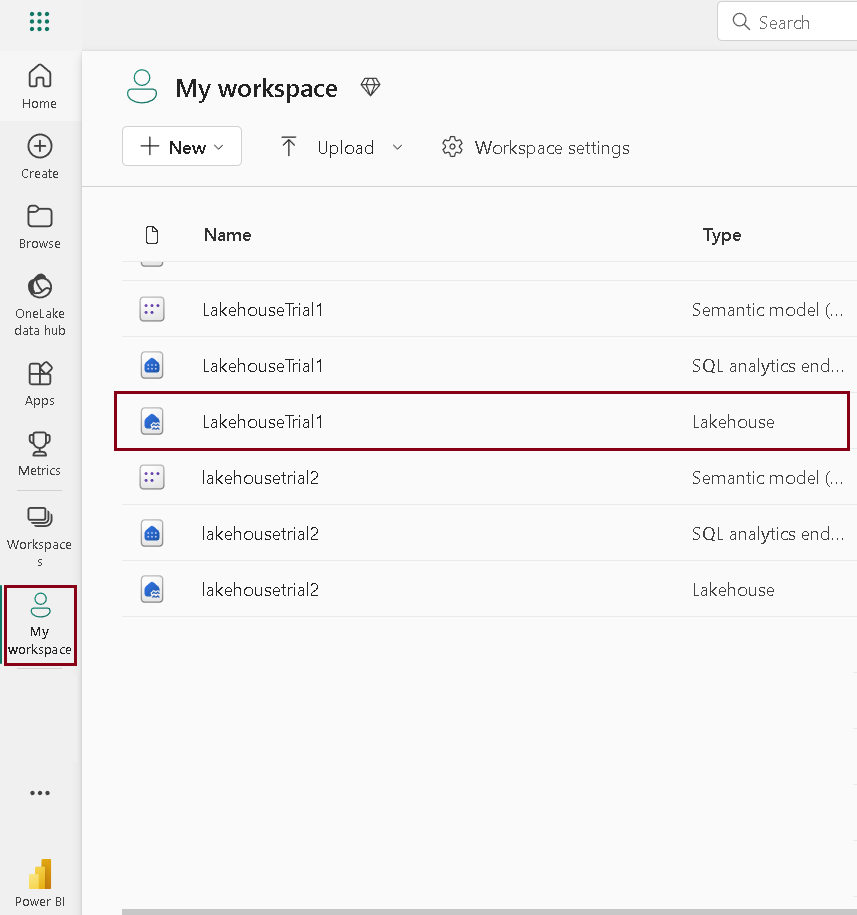
- Select “More Options” in the table or files section where you intend to create a shortcut and click “New shortcut”.
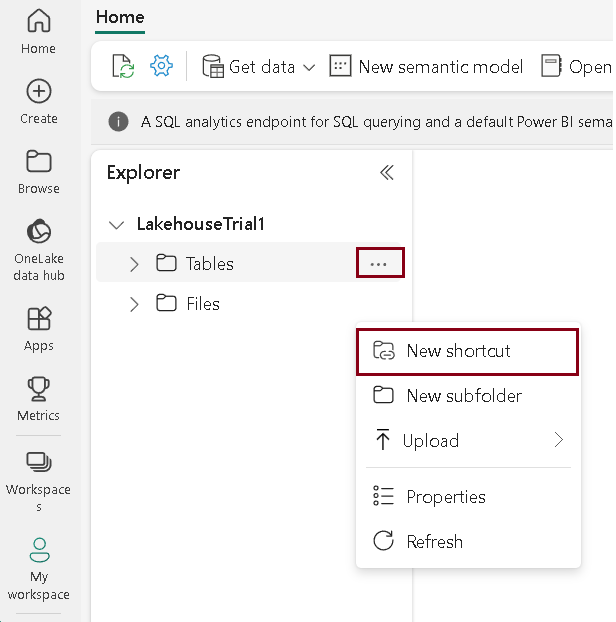
- A new window will appear, displaying options from both internal (One lake) and external sources (Azure storage and Amazon s3). Here I select Microsoft One Lake.
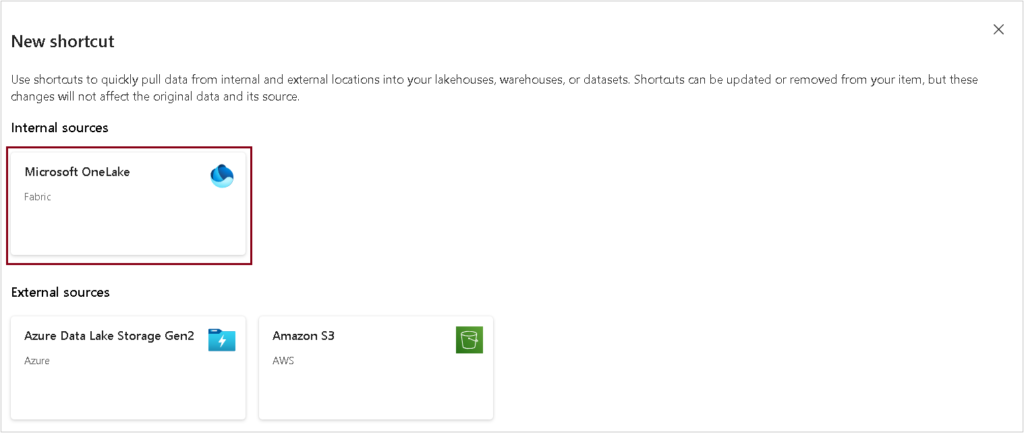
- Choose the data you wish to create a shortcut for and click on “Next.”
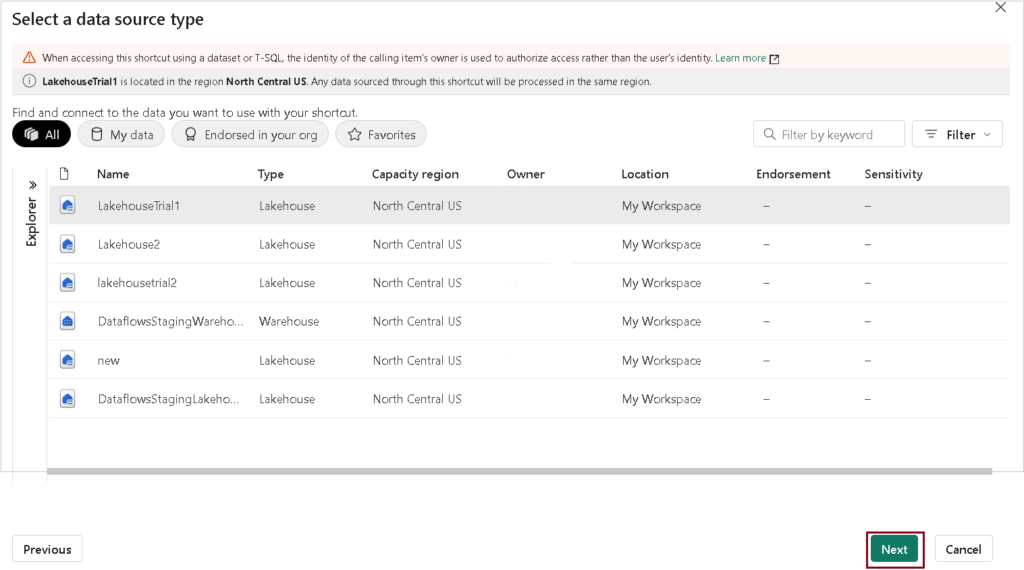
- Expand the “Tables” or “Files” folder, choose the data you want to create shortcuts for, and then click on “Next.”
Note: When making OneLake shortcuts, you can create a maximum of 50 subfolders.
- After that, you’ll be guided to the next window where you can review the shortcuts you’ve created. Utilize the edit action to rename the default shortcut name and use the delete action to remove any selections you don’t want. Click “Create” to generate the shortcuts.

- The next window you see will say “Success,” letting you know that the shortcut has been created without any issues.

- Click close.
- The lakehouse refreshes automatically, and you’ll see the shortcut listed under the chosen directory (Files) in the Explorer pane.

Creating shortcuts in KQL Databases
Steps in creating shortcuts in KQL Databases
To create a shortcut in your KQL database, follow these steps
Prerequisite
Refer blog Lesson 4-Fabric workspaces to create workspace in Microsoft Fabric.
How to create KQL Database?
- Open the workspace you created.
- Click on “New” and then select “More Options.”
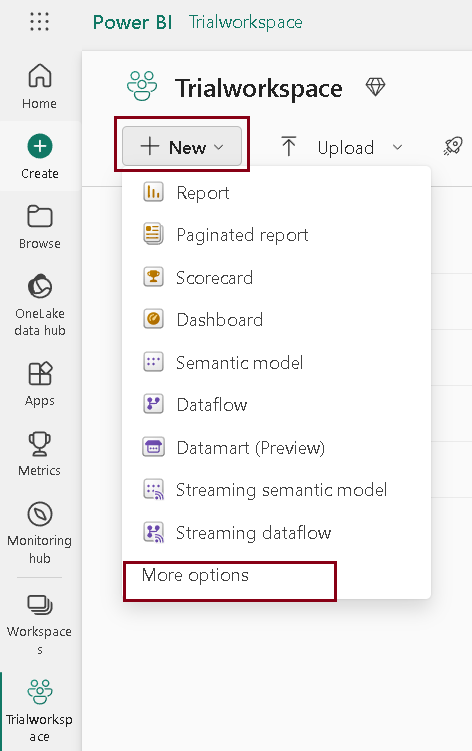
- Choose “KQL Database” under the category of Real-time Analytics.
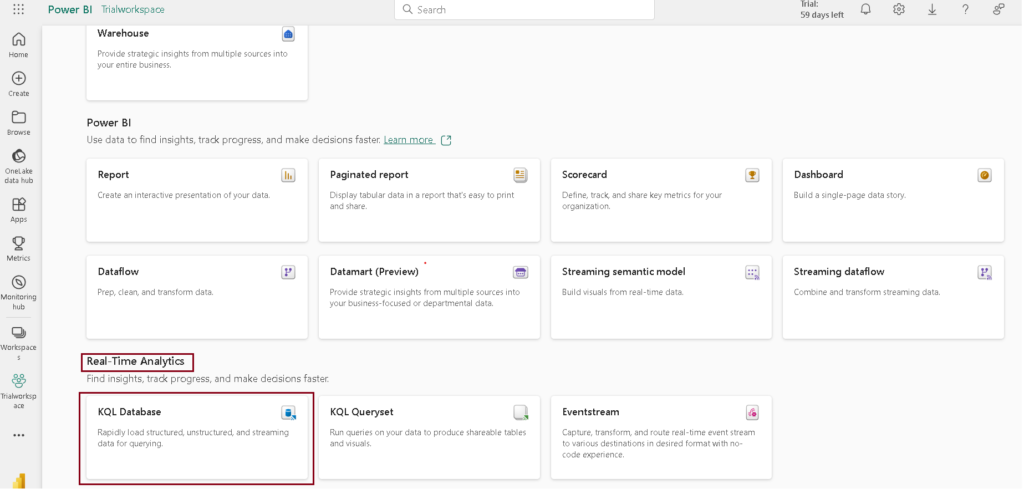
- Enter the desired database name that you want to create. Click Create.
Note: The database name cannot contain special characters.

- The KQL database has been successfully created, and you are redirected to the main page of the KQL database where information about the database is displayed.
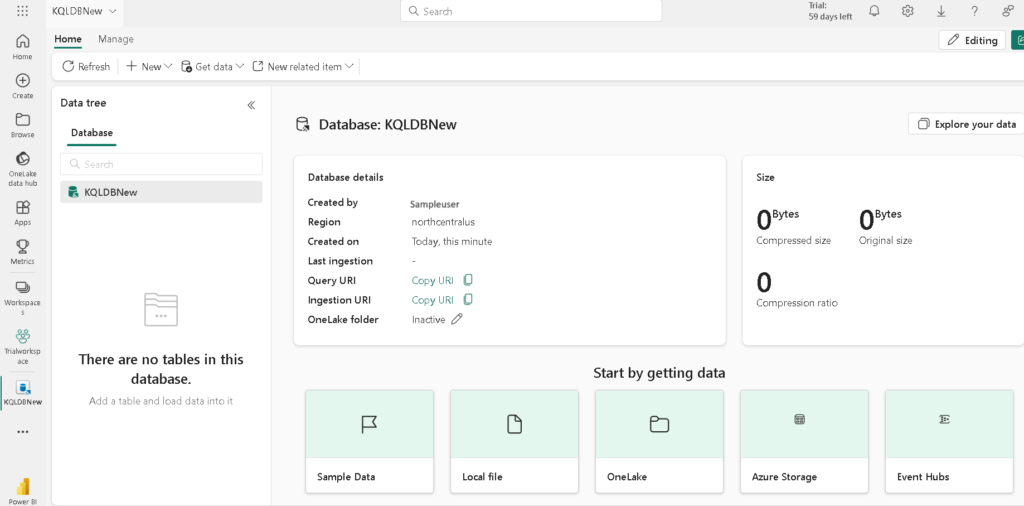
How to create shortcut in KQL database?
Follow the below steps to create shortcut in KQL database.
- On the main page of the KQL database, click on “New” and then select “OneLake Shortcut.
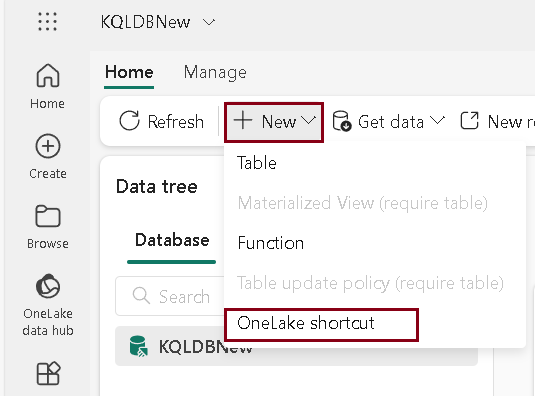
- A new window will appear, displaying options from both internal (One lake) and external sources (Azure storage and Amazon s3). Here I select Microsoft One Lake.
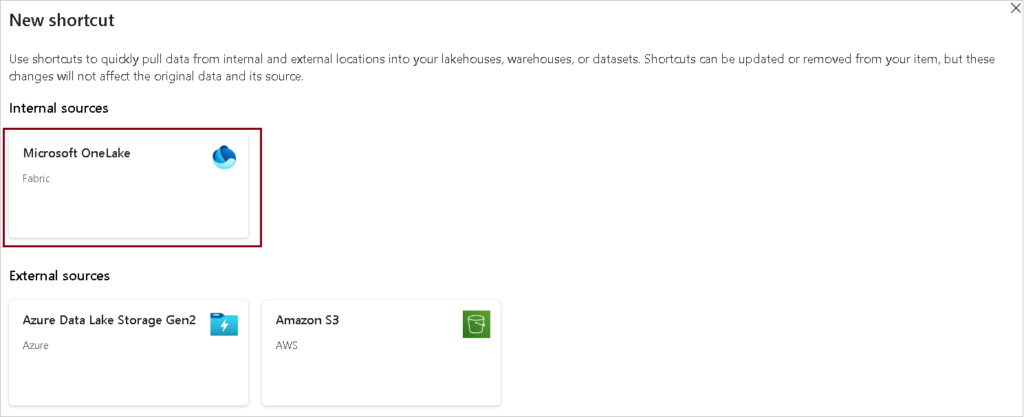
- Choose the data you wish to create a shortcut for and click on “Next.”
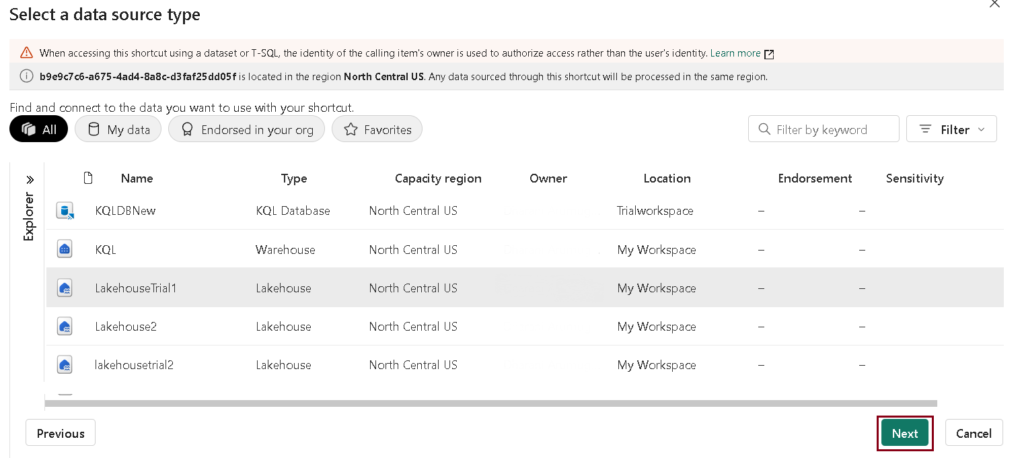
- Expand the “Tables” or “Files” folder, choose the data you want to create shortcuts for, and then click on “Create”.
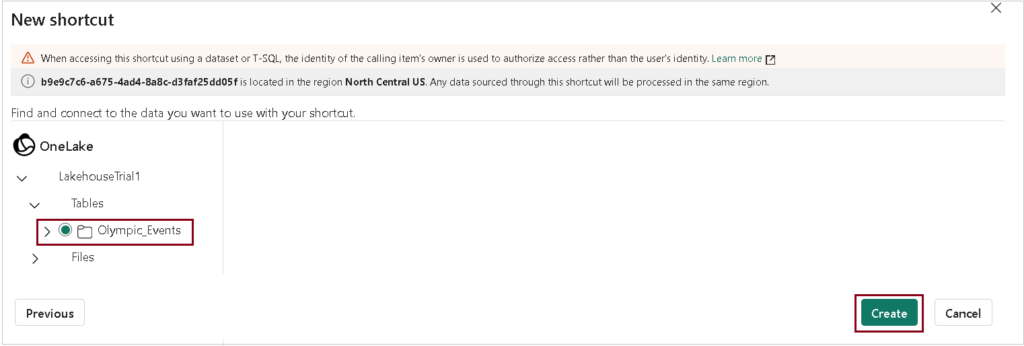
- You’ll receive a prompt confirming the successful creation of the shortcut. Click “Close” to finish.
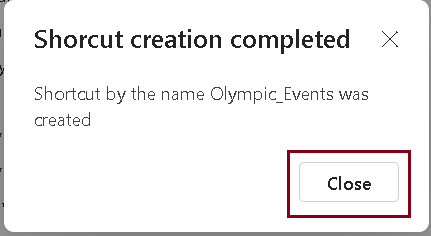
- The KQL database pages refresh automatically, and you’ll find the shortcut created under the “Shortcut” folder.
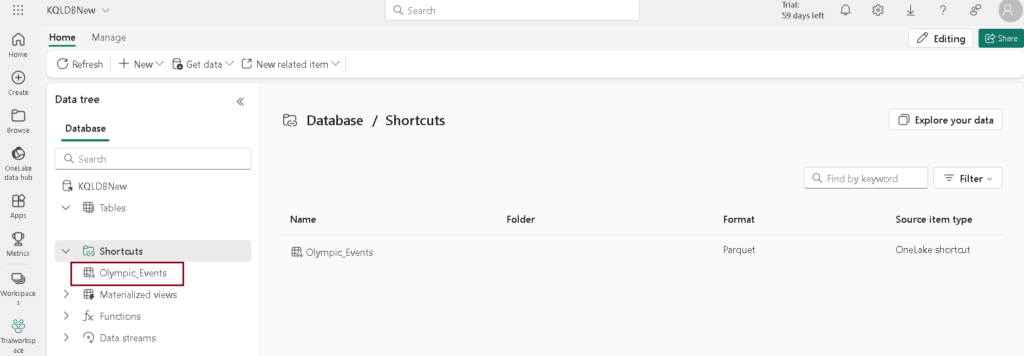
| Tags | Microsoft Fabric |
| Useful links | |
| MS Learn Modules | |
Test Your Knowledge |
Quiz |
